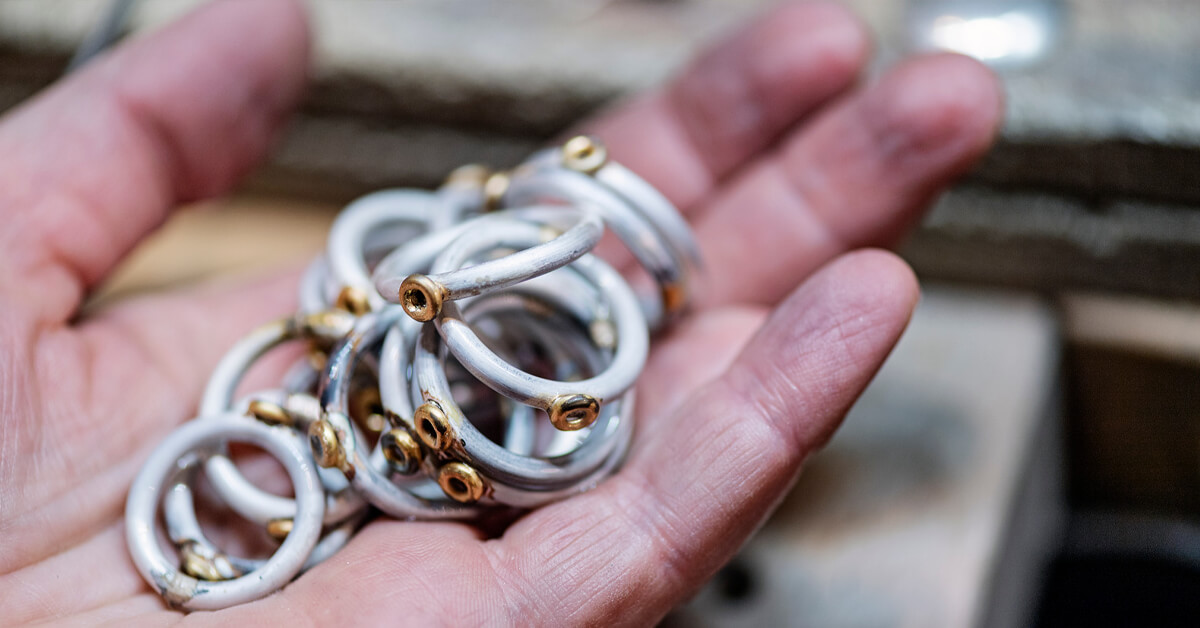The ability to distinguish between precious white metals like white gold, silver, platinum, palladium, and rhodium is obviously a useful skill – especially for professionals like jewelers and pawnbrokers. Mostly, the ability comes with experience. Over time, as you’re exposed to more and more specimens, you develop a sixth sense for materials. But you can still make educated guesses earlier on using these tips for identifying precious white metal jewelry.
Of course, assaying is the only way to determine the type of precious metal with 100-percent accuracy. At Manhattan Gold & Silver, we provide fast, reliable assaying using several methods, including acid testing, fire assay, ultrasound assay, and XRF (X-ray fluorescence) testing.
To make informed guesses and develop your intuition, though, and to help guide you before assaying, familiarize yourself with these techniques for identifying precious white metals by sight and other senses.
Pointers for Identifying Precious White Metal Jewelry
- If it’s magnetic, it’s probably not any precious white metal jewelry. But keep in mind that springs in clasps and jump rings are usually magnetic, so test the whole piece.
- Silver tarnishes, but white gold, platinum, and palladium do not. If it’s oxidized or tarnished, it’s probably silver jewelry.
- Older sterling silver jewelry develops a grayish-white color.
- Sterling silver is fairly malleable. You’ll find more misshapen sterling silver jewelry than jewelry made of other types of precious white metal.
- White gold is the hardest and least malleable of the precious white metals.
- Sterling silver jewelry is the most likely to show signs of wear; in particular, it scratches much more easily. Platinum and palladium are also more likely to scratch than white gold.
- You can see a creamy yellow color in white gold jewelry over time as the rhodium plating wears away.
- Platinum is the heaviest precious white metal. Silver is the lightest of them.
- Platinum is quite white, but it does develop a more grayish patina over time.
- Platinum usually appears brighter than white gold, and again, it’s also denser, so platinum jewelry feels heftier.
- Palladium jewelry looks similar to platinum, but it has a slightly darker grey coloring. And remember, palladium is less dense and therefore feels lighter than platinum jewelry.
- Rhodium is used to plate sterling silver and white gold jewelry to give it a whiter, shinier appearance. But because rhodium is such an expensive precious metal, you won’t find much – if any – pure rhodium jewelry out there.
- People are far more likely to have allergic reactions to silver and white gold jewelry than to platinum, palladium, or rhodium-plated jewelry, as these three are hypoallergenic metals. Silver is the most allergenic of them all. So, if you happen to be told about irritation by the jewelry’s owner, this helps narrow it down.
- Look for metal identifiers or purity hallmarks stamped on the jewelry. Platinum may have markings such as Plat, Platinum, 950, PT 950, PT, Pt; white gold may have markings such as 10k, 14k, 18k; sterling silver may have markings such as 925, sterling, sterling silver; and palladium may have markings such as Palladium, Pall, PD, Pd, PD 950.
Need to Have Metal Jewelry Identified?
Manhattan Gold & Silver has the right tools for quickly and accurately identifying precious white metal jewelry, including alloys and plating. We can do so without any damage to your items. Plus, we’ll buy and refine your gold, silver, palladium, platinum, or rhodium-plated jewelry with our transparent assaying, weighing, and pricing processes. Visit our Midtown NY location, ship your lot to us, or get in touch today with any questions.












